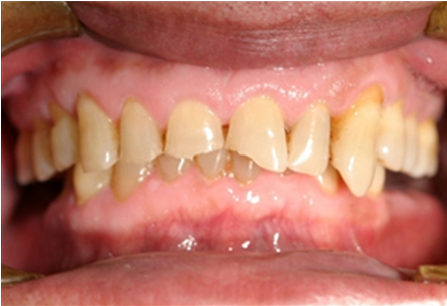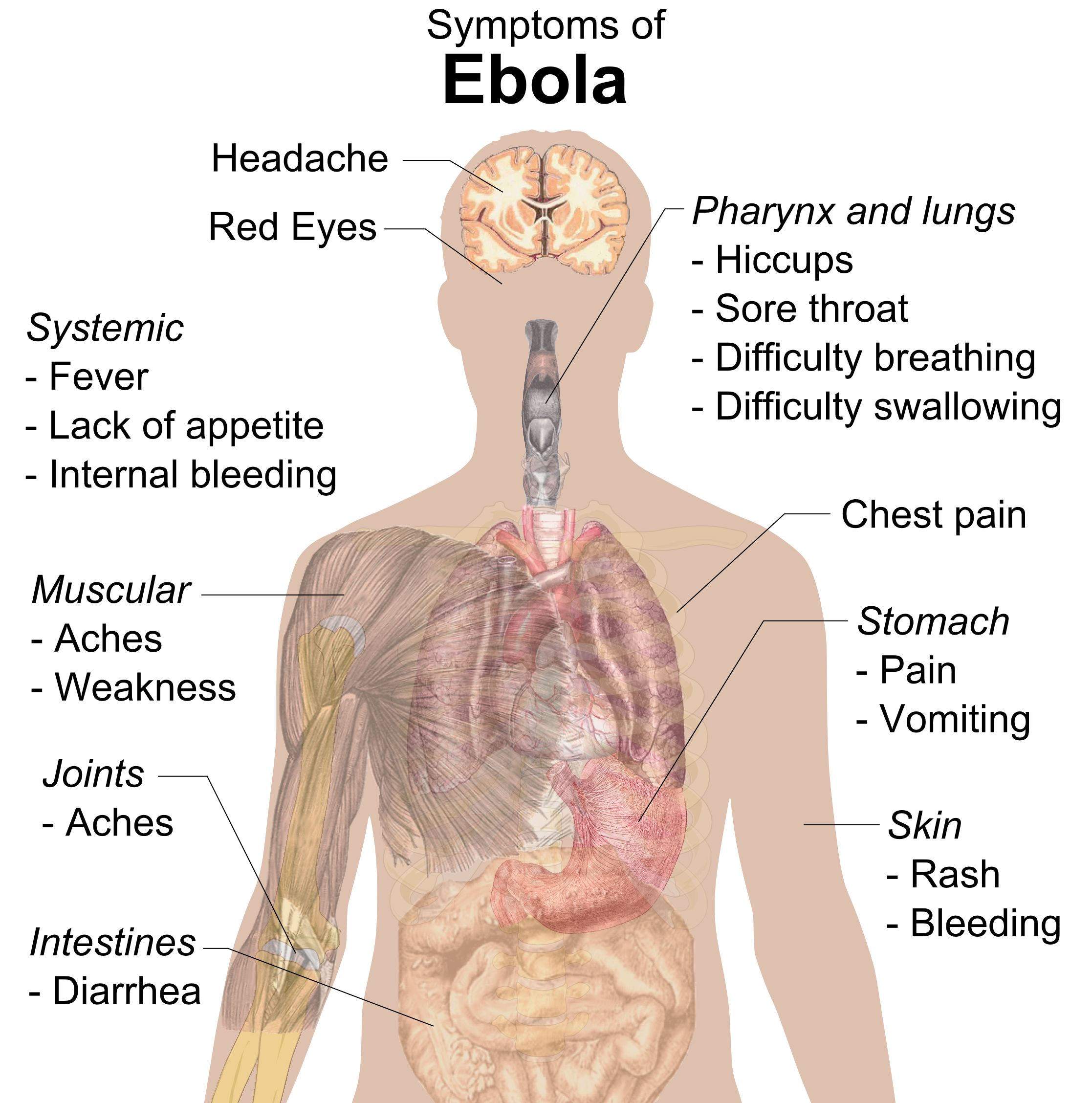|
Coffee Ground Vomiting
Coffee ground vomitus refers to a particular appearance of vomit. Within organic heme molecules of red blood cells is the element iron, which oxidizes following exposure to gastric acid. This reaction causes the vomitus to look black like coffee grounds. Causes Esophagitis, esophageal varices, gastritis, cirrhosis or gastric ulcers for example, may bleed and produce coffee-ground vomitus. When unaccompanied by melena, hematemesis or a fall in hemoglobin with corresponding urea rises and creates an unstable reaction, and other causes of coffee ground vomitus need to be elucidated; for example, gastric stasis, bowel obstruction or ileus, that can cause oxidised food material to be vomited. Vomiting iron supplements can also mimic coffee grounds to the untrained eye. Diseases such as Ebola, yellow fever, viral hepatitis, haemophilia B, fatty liver disease and cancers of stomach, pancreas, esophagus and, rarely, retrograde jejunogastric intussusception might also be the rea ... [...More Info...] [...Related Items...] OR: [Wikipedia] [Google] [Baidu] |
Gastroenterology
Gastroenterology (from the Greek gastḗr- "belly", -énteron "intestine", and -logía "study of") is the branch of medicine focused on the digestive system and its disorders. The digestive system consists of the gastrointestinal tract, sometimes referred to as the ''GI tract,'' which includes the esophagus, stomach, small intestine and large intestine as well as the accessory organs of digestion which include the pancreas, gallbladder, and liver. The digestive system functions to move material through the GI tract via peristalsis, break down that material via digestion, absorb nutrients for use throughout the body, and remove waste from the body via defecation. Physicians who specialize in the medical specialty of gastroenterology are called gastroenterologists or sometimes ''GI doctors''. Some of the most common conditions managed by gastroenterologists include gastroesophageal reflux disease, gastrointestinal bleeding, irritable bowel syndrome, inflammatory bowel disease (IBD ... [...More Info...] [...Related Items...] OR: [Wikipedia] [Google] [Baidu] |
Hematemesis
Hematemesis is the vomiting of blood. It can be confused with hemoptysis (coughing up blood) or epistaxis (nosebleed), which are more common. The source is generally the upper gastrointestinal tract, typically above the suspensory muscle of duodenum. It may be caused by ulcers, tumors of the stomach or esophagus, varices, prolonged and vigorous retching, gastroenteritis, ingested blood (from bleeding in the mouth, nose, or throat), or certain drugs. Hematemesis is treated as a medical emergency, with treatments based on the amount of blood loss. Investigations include endoscopy. Any blood loss may be corrected with intravenous fluids and blood transfusions. Patients may need to avoid taking anything by mouth. Definition Hematemesis is the vomiting of blood. This is usually vomit that contains bright red blood. Coffee ground vomiting is similar to hematemesis, but is distinct in not involving bright red blood. Hematemesis must be differentiated from hemoptysis (coughing u ... [...More Info...] [...Related Items...] OR: [Wikipedia] [Google] [Baidu] |
Gastroesophageal Reflux Disease
Gastroesophageal reflux disease (GERD) or gastro-oesophageal reflux disease (GORD) is a chronic upper gastrointestinal disease in which stomach content persistently and regularly flows up into the esophagus, resulting in symptoms and/or complications. Symptoms include dental corrosion, dysphagia, heartburn, odynophagia, regurgitation, non-cardiac chest pain, extraesophageal symptoms such as chronic cough, hoarseness, reflux-induced laryngitis, or asthma. In the long term, and when not treated, complications such as esophagitis, esophageal stricture, and Barrett's esophagus may arise. Risk factors include obesity, pregnancy, smoking, hiatal hernia, and taking certain medications. Medications that may cause or worsen the disease include benzodiazepines, calcium channel blockers, tricyclic antidepressants, NSAIDs, and certain asthma medicines. Acid reflux is due to poor closure of the lower esophageal sphincter, which is at the junction between the stomach and ... [...More Info...] [...Related Items...] OR: [Wikipedia] [Google] [Baidu] |
Nonsteroidal Anti-inflammatory Drug
Non-steroidal anti-inflammatory drugs (NSAID) are members of a Indication (medicine), therapeutic drug class which Analgesic, reduces pain, Anti-inflammatory, decreases inflammation, Antipyretic, decreases fever, and Antithrombotic, prevents blood clots. Side effects depend on the specific drug, its dose and duration of use, but largely include an increased risk of Stomach ulcers, gastrointestinal ulcers and bleeds, heart attack, and kidney disease. The term ''non-steroidal'', common from around 1960, distinguishes these drugs from corticosteroids, another class of anti-inflammatory drugs, which during the 1950s had acquired a bad reputation due to overuse and side-effect problems after their introduction in 1948. NSAIDs work by inhibiting the activity of cyclooxygenase enzymes (the COX-1 and COX-2 isozyme, isoenzymes). In cells, these enzymes are involved in the synthesis of key biological mediators, namely prostaglandins, which are involved in inflammation, and thromboxanes, ... [...More Info...] [...Related Items...] OR: [Wikipedia] [Google] [Baidu] |
Intussusception (medical Disorder)
Intussusception is a medical condition in which a part of the intestine folds into the section immediately ahead of it. It typically involves the small intestine and less commonly the large intestine. Symptoms include abdominal pain which may come and go, vomiting, abdominal bloating, and bloody stool. It often results in a small bowel obstruction. Other complications may include peritonitis or bowel perforation. The cause in children is typically unknown; in adults a ''lead point'' is sometimes present. Risk factors in children include certain infections, diseases like cystic fibrosis, and intestinal polyps. Risk factors in adults include endometriosis, bowel adhesions, and intestinal tumors. Diagnosis is often supported by medical imaging. In children, ultrasound is preferred while in adults a CT scan is preferred. Intussusception is an emergency requiring rapid treatment. Treatment in children is typically by an enema with surgery used if this is not successful. Dexa ... [...More Info...] [...Related Items...] OR: [Wikipedia] [Google] [Baidu] |
Esophageal Cancer
Esophageal cancer (American English) or oesophageal cancer (British English) is cancer arising from the esophagus—the food pipe that runs between the throat and the stomach. Symptoms often include dysphagia, difficulty in swallowing and weight loss. Other symptoms may include odynophagia, pain when swallowing, a hoarseness, hoarse voice, Lymphadenopathy, enlarged lymph nodes ("glands") around the clavicle, collarbone, a dry cough, and possibly hemoptysis, coughing up or hematemesis, vomiting blood. The two main Histopathology, sub-types of the disease are esophageal squamous-cell carcinoma (often abbreviated to ESCC), which is more common in the developing world, and esophageal adenocarcinoma (EAC), which is more common in the developed world. A number of less common types also occur. Squamous-cell carcinoma arises from the squamous epithelium, epithelial cells that line the esophagus. Adenocarcinoma arises from glandular cells present in the lower third of the esophagus, ofte ... [...More Info...] [...Related Items...] OR: [Wikipedia] [Google] [Baidu] |
Pancreatic Cancer
Pancreatic cancer arises when cell (biology), cells in the pancreas, a glandular organ behind the stomach, begin to multiply out of control and form a Neoplasm, mass. These cancerous cells have the malignant, ability to invade other parts of the body. A number of types of pancreatic cancer are known. The most common, pancreatic adenocarcinoma, accounts for about 90% of cases, and the term "pancreatic cancer" is sometimes used to refer only to that type. These adenocarcinomas start within the part of the pancreas that makes digestive enzymes. Several other types of cancer, which collectively represent the majority of the non-adenocarcinomas, can also arise from these cells. About 1–2% of cases of pancreatic cancer are neuroendocrine tumors, which arise from the hormone-producing neuroendocrine cell, cells of the pancreas. These are generally less aggressive than pancreatic adenocarcinoma. Signs and symptoms of the most-common form of pancreatic cancer may include jaundice, ... [...More Info...] [...Related Items...] OR: [Wikipedia] [Google] [Baidu] |
Fatty Liver Disease
Fatty liver disease (FLD), also known as hepatic steatosis and steatotic liver disease (SLD), is a condition where excess fat builds up in the liver. Often there are no or few symptoms. Occasionally there may be tiredness or pain in the upper right side of the abdomen. Complications may include cirrhosis, liver cancer, and esophageal varices. The main subtypes of fatty liver disease are metabolic dysfunction–associated steatotic liver disease (MASLD, formerly "non-alcoholic fatty liver disease" (NAFLD)) and alcoholic liver disease (ALD), with the category "metabolic and alcohol associated liver disease" (metALD) describing an overlap of the two. The primary risks include alcohol, type 2 diabetes, and obesity. Other risk factors include certain medications such as glucocorticoids, and hepatitis C. It is unclear why some people with NAFLD develop simple fatty liver and others develop nonalcoholic steatohepatitis (NASH), which is associated with poorer outcomes. Diagnosis is ba ... [...More Info...] [...Related Items...] OR: [Wikipedia] [Google] [Baidu] |
Haemophilia B
Haemophilia B, also spelled hemophilia B, is a blood clotting disorder causing easy bruising and bleeding due to an inherited mutation of the gene for factor IX, and resulting in a deficiency of factor IX. It is less common than factor VIII deficiency (haemophilia A). Haemophilia B was first recognized as a distinct disease entity in 1952. It is also known by the eponym ''Christmas disease'', named after Stephen Christmas, the first patient described with haemophilia B. In addition, the first report of its identification was published in the Christmas edition of the ''British Medical Journal''. Most individuals who have Hemophilia B and experience symptoms are men. The prevalence of Hemophilia B in the population is about one in 40,000; Hemophilia B represents about 15% of patients with hemophilia. Many female carriers of the disease have no symptoms. However, an estimated 10-25% of female carriers have mild symptoms; in rare cases, female carriers may have moderate or severe sy ... [...More Info...] [...Related Items...] OR: [Wikipedia] [Google] [Baidu] |
Ebola
Ebola, also known as Ebola virus disease (EVD) and Ebola hemorrhagic fever (EHF), is a viral hemorrhagic fever in humans and other primates, caused by ebolaviruses. Symptoms typically start anywhere between two days and three weeks after infection. The first symptoms are usually fever, sore throat, muscle pain, and headaches. These are usually followed by vomiting, diarrhoea, rash and decreased liver and kidney function, at which point some people begin to bleed both internally and externally. It kills between 25% and 90% of those infected – about 50% on average. Death is often due to shock from fluid loss, and typically occurs between 6 and 16 days after the first symptoms appear. Early treatment of symptoms increases the survival rate considerably compared to late start.Ebola in Uganda: An Ebola vaccine was approved by the US FDA in December 2019. The virus spreads through direct contact with body fluids, such as blood from infected humans or other animals, o ... [...More Info...] [...Related Items...] OR: [Wikipedia] [Google] [Baidu] |






